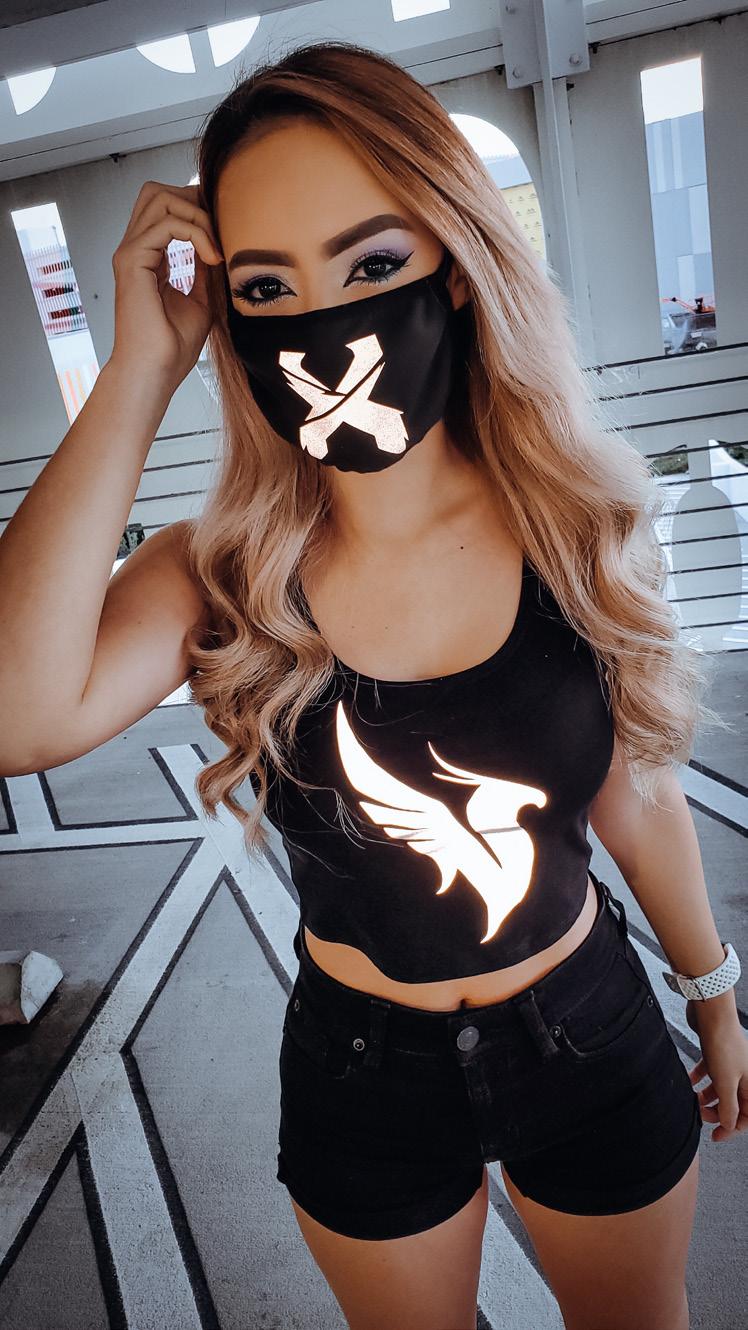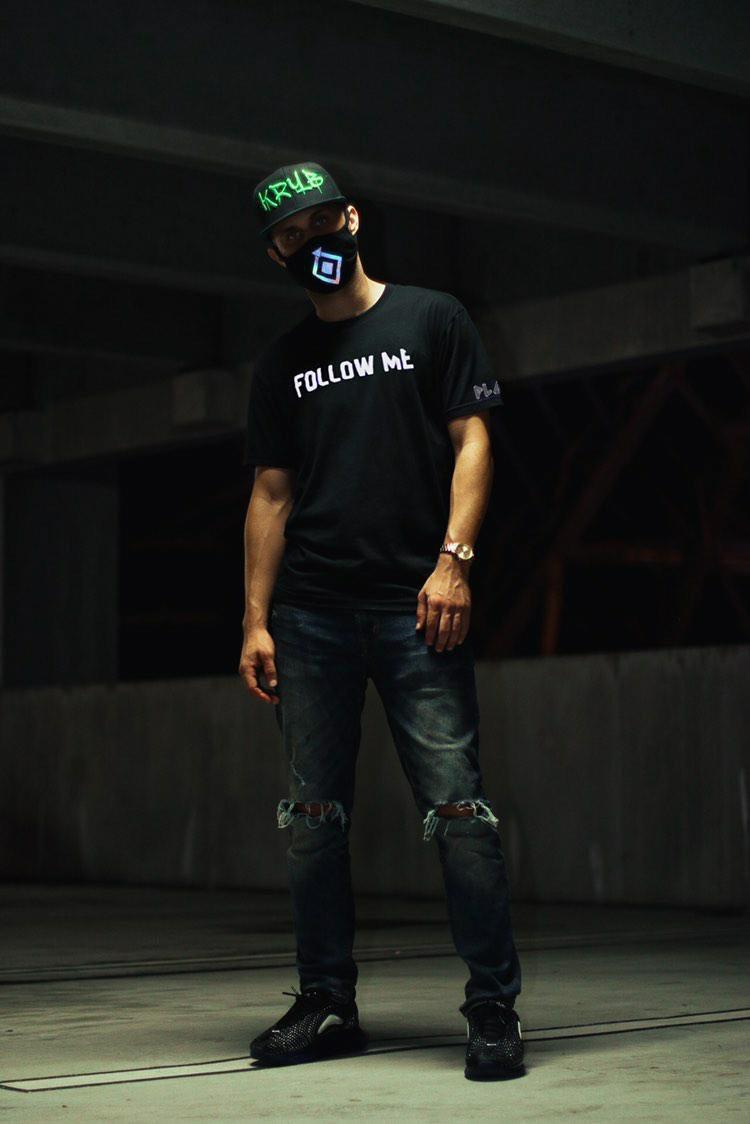
7 minute read
Fashion Forever
While history stops for no one, and 2020 almost came to a standstill,
COVID-19, the worldwide Black Lives
Matter protests, and the January 6th
Capitol riot have proven this past year to be as historic as any. If the past is any guide, then historic times mean further proof that fashion stretches beyond what is seen on the runway or red carpet events.
The fashion industry represents more than just an outfit for work or picking out a pretty dress—it evokes the history and culture of who we are as a people. Fashion curation has proven itself to be important for this very reason: to document and illustrate the times in which we live.
Fashion curation is the process by which museums and galleries save, catalogue and record meaningful fashion from a given era. It is critical for documenting and preserving fashion of importance culturally, economically, politically, and socially. The field is on the rise, as many students from diverse backgrounds have started to get degrees in museum curation and fashion history.
Fashion is a fine art—albeit one that we all live our lives in, so in some ways, it is more connected to the story of humanity than traditional fine art ever could be. Photographer Bill Cunningham once said, “Fashion is the armor to survive the reality of everyday life.”
The job of a fashion curator is unlike any other. It requires many talents: historian, garment preserver, and storyteller all wrapped in one.
If fashion curation had one spokesperson, it would most likely be Andrew Bolton, curator of criticallyacclaimed exhibitions such as “Alexander McQueen: Savage Beauty,” “China: Through the Looking Glass” and “Heavenly Bodies: Fashion and the Catholic Imagination.”
Bolton once said, “I tend to approach themes through an anthropological lens first and foremost, then I use the garments to tell my story.”
In essence, the job of a fashion curator is to look at and isolate fashion moments past, present, and future. Furthermore, they must connect the dots in a compelling and timely context easily digestible for the public.
“People have a powerful relationship with clothing, and the pieces tell stories about their lived experience,” notes Dr. Sara Hume, Curator and Associate Professor at the Kent State University Museum. “Clothing is very evocative for people of their lived experience, and other people’s clothing triggers powerful memories. I am interested in the stories that clothes tell about the people who owned them and the ways that people draw connections between clothing and memories of the people they love.”
Hume focuses her work on dressmaking of the 19th and 20th centuries, as well as the political, socio-economic, and cultural conditions that create fashion aesthetics. Currently, she is writing a book that looks at the evolution and preservation of traditional folk dresses in Alsace, France, in the wake of pressure from political discord and mainstream fashion.
While the Met Museum is renowned for its work in the preservation and documentation of fashion garments (from the beginnings of civilization to the present day), many other museums around the world preserve fashion’s legacies. The Victoria and Albert Museum, Musée de la Mode de la Ville de Paris, the Kyoto Costume Institute, and the MoMu Antwerp are among the most prolific museums specializing in the preservation of fashion for generations to come.
While one might conclude that in a digital age, the need for such institutions is dying down, this certainly is not the case. Now more than ever, people are getting degrees in the fields of fashion history and museum curation.
Fashion Historian and Independent Curator Darnell-Jamal Lisby earned his Master’s in Fashion & Textiles: History, Theory & Museum Practices at the Fashion Institute of Technology. As one of the curators for the “Willi Smith: Street Couture” exhibit at the Cooper Hewitt, Lisby has made it his mission to heavily emphasize the impact Black culture has had on fashion history and fashion in the 20th and 21st centuries.
Lisby observes, “I see my role as a storyteller meant to connect and contextualize unsung sects within the total history of fashion. We’re trained to glorify Eurocentrism while neglecting the discovery and uplifting of knowledge from non-Eurocentric communities; thus, I want to rectify that in my work, creating a balance of how we educate audiences.”
Curators find inspiration anywhere and everywhere. In August 2020, the SCAD FASH museum in Atlanta opened “Ruth E. Carter: Afrofuturism in Costume Design” about the Academy Award-winning costume designer. The exhibit featured Carter’s costumes from modern films like Black Panther, Selma, and Do the Right Thing, highlighting her impact on movies within culture, race, and politics, through her visually stunning and nuanced designs.
Luxury and prominent fashion houses all over the world take preservation seriously by cataloging and saving pieces of every collection they produce. Some have even opened their own dedicated museums. The Cristóbal Balenciaga Museoa in Getaria, Spain was the first great museum dedicated specifically to a grand couturier. And the famed Musée Yves Saint Laurent in Marrakech, Morocco in the Jardin Majorelle was created by his life partner Pierre Berge as a love letter to YSL’s time spent in the Red City; the museum holds 5,000 pieces of clothing and 15,000 Haute Couture accessories.
Dr. Kimberly Chrisman-Campbell is an independent scholar and public historian. She specializes in European and North American garments from the 17th century to the present. As a freelancer for 13 years, she has seen firsthand how the industry of curation and historical fashion has exponentially risen.
“Many fashion designers have begun to recognize the value of their archives as sources of design inspiration and brand identity,” Chrisman-Campbell explains. “And designers and fashion students depend on museum exhibitions and collections to study history and construction.”
Dr. Hazel Clark, Professor of Design Studies and Fashion Studies at Parsons, has written several books on the history of fashion and design. She also curated the 2017 exhibit “fashion after Fashion” at The Museum of Arts and Design.
“In terms of scholarship around fashion, it’s broader now,” she says. “Our understanding of fashion is much broader now than it was years ago, when the tendency was—maybe up until way into the late 20th century—to study the change in styles or look at a designer. Now there’s much more scholarship on our relationship to clothes, our identity, and issues around global production.”
Dr. Elizabeth Kutesko, author of Fashioning Brazil: Globalization of Brazilian Dress in National Geographic, has researched Latin American bodily practices and the convergence of fashion, cultural identity, representation, and power.
Fashion Studies is undergoing a “seismic change,” Kutesko says, “as scholars are increasingly questioning Eurocentric perspectives and pushing to incorporate broader definitions of fashion whilst recognizing the imperial and colonial legacies of the industry.”
Luxury and prominent fashion houses all over the world have taken the need for preservation seriously by cataloging and saving pieces of every collection they produce.
The COVID-19 pandemic has affected every sector of the fashion industry, and fashion museums are no exception. While many exhibitions have had to be canceled or postponed due to poor attendance or health hazards, there is a silver lining. Chrisman-Campbell, Clark, Hume, Kutesko and Lisby agree that this disruption has given fashion a breather and helped them reflect on the field moving forward.
“The global pandemic has prompted a host of questions considering the employment prospects of graduates entering the workplace, as well as the inequalities surrounding sustainability and cultural appropriation that are so rife within the industry,” Kutesko says. Social media, museum websites, exhibitions, and video tours have helped the arts during the lockdown, according to Hume.
“Because the KSU Museum is small and not in a large city, social media and the web provide an opportunity to reach a larger audience than would ever enter our physical building,” she says.
Clark has an optimistic view of the future of fashion.
“There’s been a greater recognition of the role that fashion plays in a more social, ethical, and political way,” she says. “That will be what exhibitions will be looking at in future. I’m hoping that museums will try to expand the definitions of what fashion is and what it can do.”
Lisby is hopeful as well.
“There are so many museums looking at diversifying their collections and exhibition narratives, and hopefully soon, diversifying their museum staff will not be too far behind,” she says.
On the authority of ChrismanCambpell, fashion curators are very attuned to the cultural moment we have experienced collectively.
“Museums are actively collecting objects associated with COVID-19, the Black Lives Matter protests, or the January 6th attack on the US Capitol,” she says. “History never stops, and fashion is more than what you see on the runway or the red carpet.”

!"#$%&'()*+),$-.)'/0012)+

!"#$%&'()*+),$-.)'/0012)+


!"#$%!&'#()#*+#),)-."/012#()#341#"+#5%67'869:$%!&'#
8)#()-)#;<43)*#+1#"/0=#;<41)"#"+#<+,)#41*#3-)4")#(0"/#3+>;4==0+1#41*#01")1"0+1?# @A-#B-41*#0=#"/)#>+="#=013)-)#-);-)=)1"4"0+1#+C#(/+#()#4-)?#
8/)"/)-#0"D=#(+-E#+1#*),)<+;012#"/)#<4")="#41*#2-)4")="#-)C<)3"0,)#;-+*A3"=#+-#(+-E#+1# >401"401012#4#,02+-+A=#)F0=")13)G#(0"/+A"#"/)#<+,)#+C#+A-#C4>0<.G#+A-#C-0)1*=#41*#+A-#"-0B)G#"/)# (+-E#"/4"#()#*+#(+A<*#B)#>)41012<)==?#
9/0=#<+,)#41*#3+11)3"0+1#0=#(/4"#*-0,)=#A=?# 6"D=#(/4"#()#"-.#"+#01="0<<#01"+#),)-.+1)#()#=/4-)#+A-#;-+*A3"=#(0"/? 6"D=#1+"#HA="#4B+A"#<++E012#*+;)#4"#"/)#1)F"#-4,)G#+-#<02/"012#A;#),)-.#-++>#.+A#(4<E#01"+?# 6"D=#>+-)#"/41#B)012#=4C)#(/0<)#.+A#-A1#+-#(4<E#4"#102/" 6"D=#4B+A"#<0,012#.+A-#<0C)#"+#"/)#4B=+<A")#>4F0>A>G#(0"/#4=#>A3/#;+()-#41*#<02/"#4=#.+A#341?# 9/4"D=#(/4"#0"#>)41=#"+#<0,)#.+A-#<0C)#(0"/#$%!&'?#
!"#$%#$"&%'()'*&%"+%,"+-.%)/%012-34/%231%43,.%$'+-5,'-/.%1/6(/4#"7/%8/'19
!"#$%!&'#()#*+#),)-."/012#()#341#"+#5%67'869:$%!&'# :::;314)5678/(9;,%& 8)#()-)#;<43)*#+1#"/0=#;<41)"#"+#<+,)#41*#3-)4")#(0"/#3+>;4==0+1#41*#01")1"0+1?# @A-#B-41*#0=#"/)#>+="#=013)-)#-);-)=)1"4"0+1#+C#(/+#()#4-)?# 8/)"/)-#0"D=#(+-E#+1#*),)<+;012#"/)#<4")="#41*#2-)4")="#-)C<)3"0,)#;-+*A3"=#+-#(+-E#+1# >401"401012#4#,02+-+A=#)F0=")13)G#(0"/+A"#"/)#<+,)#+C#+A-#C4>0<.G#+A-#C-0)1*=#41*#+A-#"-0B)G#"/)# (+-E#"/4"#()#*+#(+A<*#B)#>)41012<)==?# 9/0=#<+,)#41*#3+11)3"0+1#0=#(/4"#*-0,)=#A=?# 6"D=#(/4"#()#"-.#"+#01="0<<#01"+#),)-.+1)#()#=/4-)#+A-#;-+*A3"=#(0"/? 6"D=#1+"#HA="#4B+A"#<++E012#*+;)#4"#"/)#1)F"#-4,)G#+-#<02/"012#A;#),)-.#-++>#.+A#(4<E#01"+?# 6"D=#>+-)#"/41#B)012#=4C)#(/0<)#.+A#-A1#+-#(4<E#4"#102/" 6"D=#4B+A"#<0,012#.+A-#<0C)#"+#"/)#4B=+<A")#>4F0>A>G#(0"/#4=#>A3/#;+()-#41*#<02/"#4=#.+A#341?# 9/4"D=#(/4"#0"#>)41=#"+#<0,)#.+A-#<0C)#(0"/#$%!&'?# 314)5678/(9









